Mmmmm, they look like noodles XD I want to slurp them up!


Mmmmm, they look like noodles XD I want to slurp them up!

"God made..... all the creatures that move along the ground according to their kinds (including ants). And God saw that it was good. Genesis 1:25 NIV version
Keeping:
Tetramorium immigrans Camponotus vicinus, modoc, novaeboracensis, herculeanus
Formica pallidefulva, argentea Solenopsis molesta
Formica cf. aserva Lasius brevicornis, neoniger
Peeked in on the ants to see larvae status. I placed a few curved pieces of bark on the media surface which I figured they would move their larvae under which they did. It is directly under the heat lamp. So as can be seen the larvae are developing quite nicely ![]() Yet as is obvious the larvae are all together and NOT on brood-food, though a few Solenopsis larvae are visible, they are the more pear shaped ones. I am undecided if the larvae feed themselves or are actually being fed. But in the photos there are clearly workers with distended gasters so I am inclined to believe the larvae are being fed.
Yet as is obvious the larvae are all together and NOT on brood-food, though a few Solenopsis larvae are visible, they are the more pear shaped ones. I am undecided if the larvae feed themselves or are actually being fed. But in the photos there are clearly workers with distended gasters so I am inclined to believe the larvae are being fed.
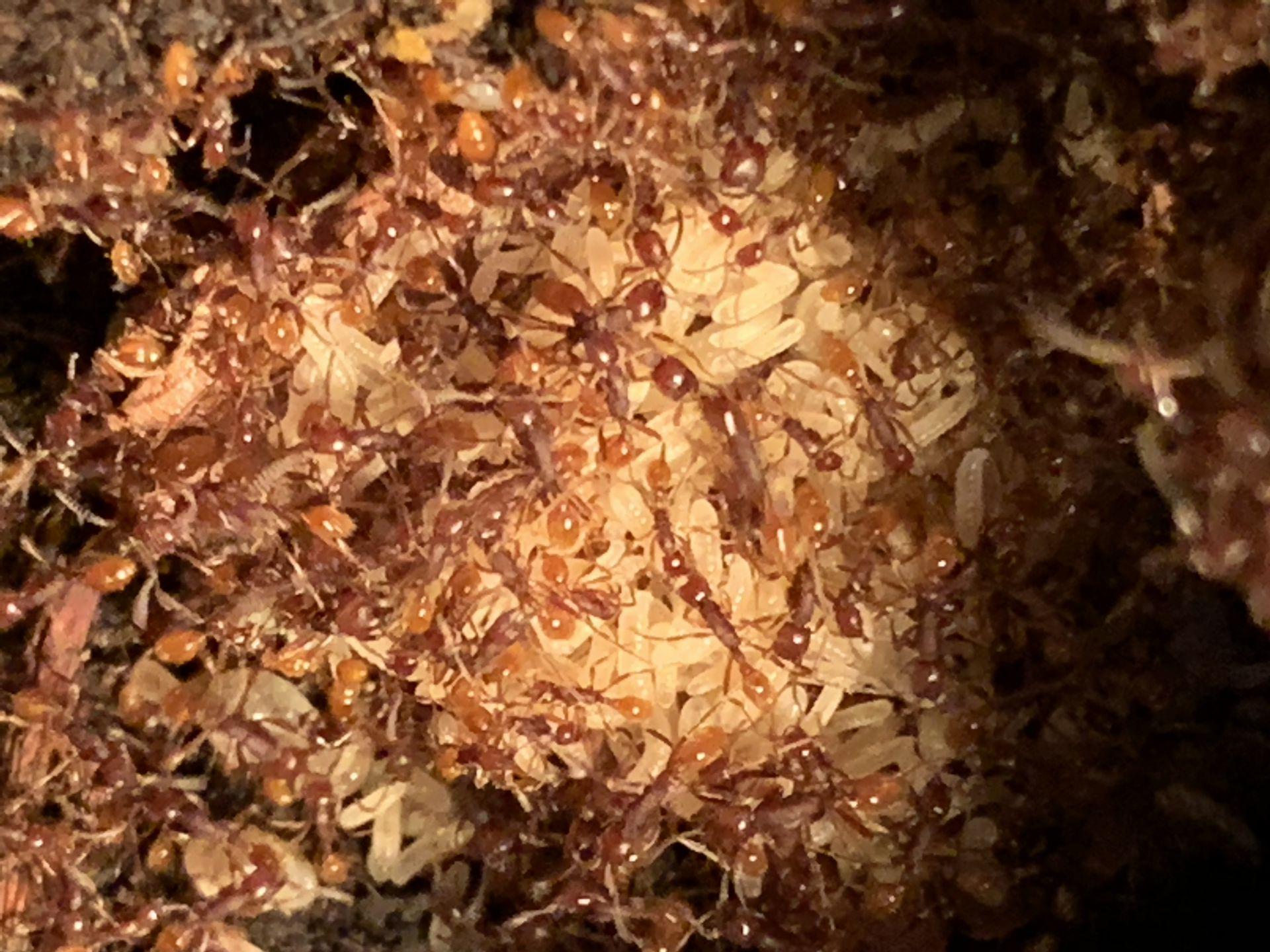
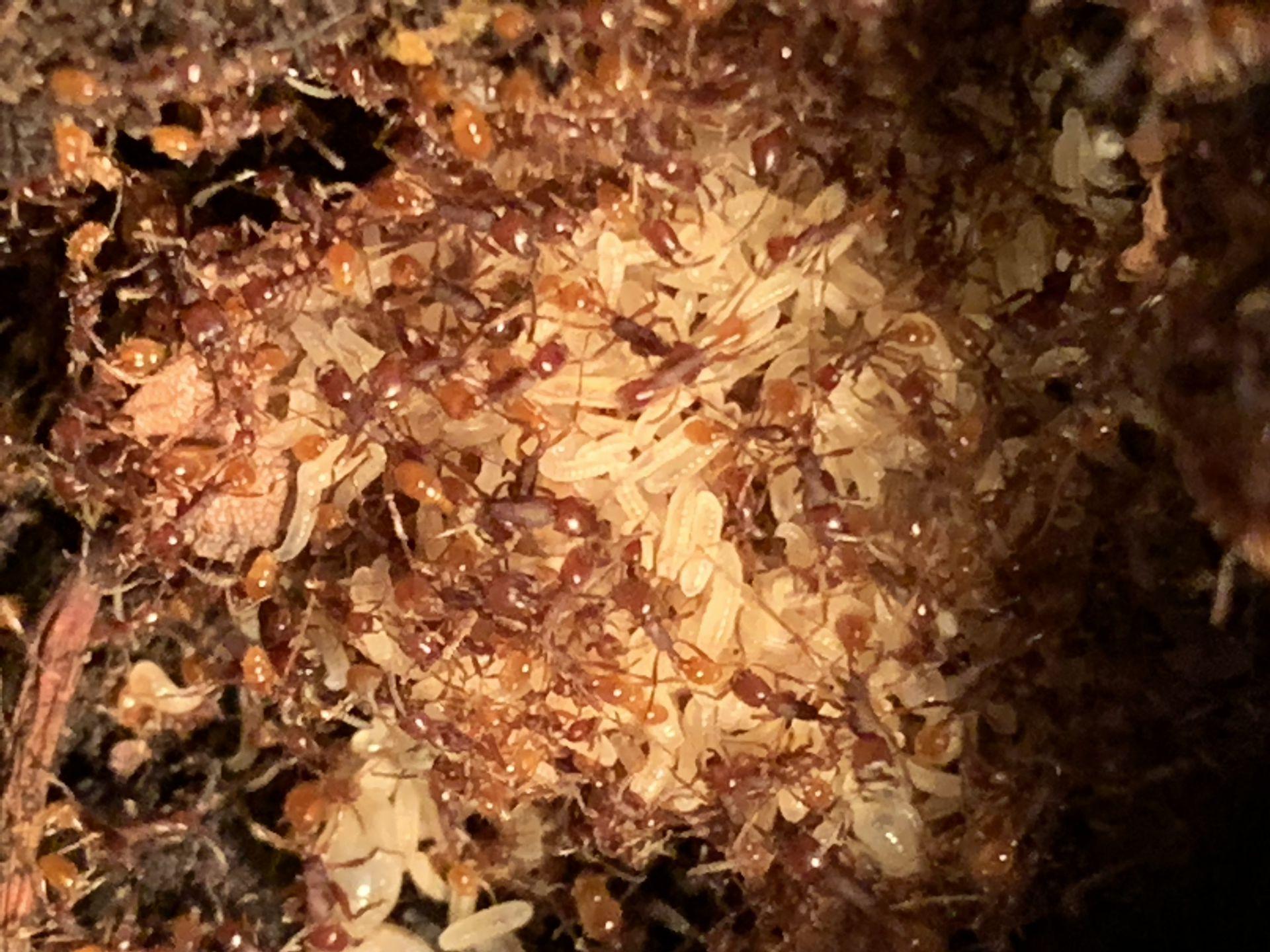
Edited by PurdueEntomology, May 18 2020 - 3:10 AM.
This colony has been given four large containers to live in. Three of them have space created for them to move into but they have stayed fixed in this one container. I suspect it is simply because they are fed every night with large quantities of food thus there really is no "incentive" to move and the possible influence of larval glandular chemicals that are suspected to initiate colony relocation are not sufficient to stimulate a nest emigration. The aforementioned despite food being placed in one of the three containers other than the one where the brood is kept. I have noted though that when food-brood is offered the rapidity, aggressiveness and numbers of workers that pour out to collect it is greater than when there were only eggs and food-brood was offered. I made a video of that but did not like the lighting so I will set up the lighting and remake a video.
Edited by PurdueEntomology, May 18 2020 - 6:23 AM.
Wonderful, they seem to be doing very well, even better than your last attempt.
Edited by ponerinecat, May 18 2020 - 10:40 AM.
Wonderful, they seem to be doing very well, even better than your last attempt.
Live and learn...
In these photos my set up for collecting Solenopsis invicta larvae and pupae as brood-food for Neivamyrmex opacithorax.
Phase 1. I collect a large quantity of S.invicta brood with workers. I will follow up with a video on that procedure.
Phase 2: They are placed in a large tray (see Image A ) which is lined with Fluon™ . Two or more vials which have water/cotton plugs and wrapped in paper to create a dark space are place in container then covered. A heat lamp is placed over the tray, this to drive ants to gather brood away from heat. After an hour or two the vials are full of brood and ants without soil.
Phase 3: Separating ants from brood and weighing brood (Photos to follow)
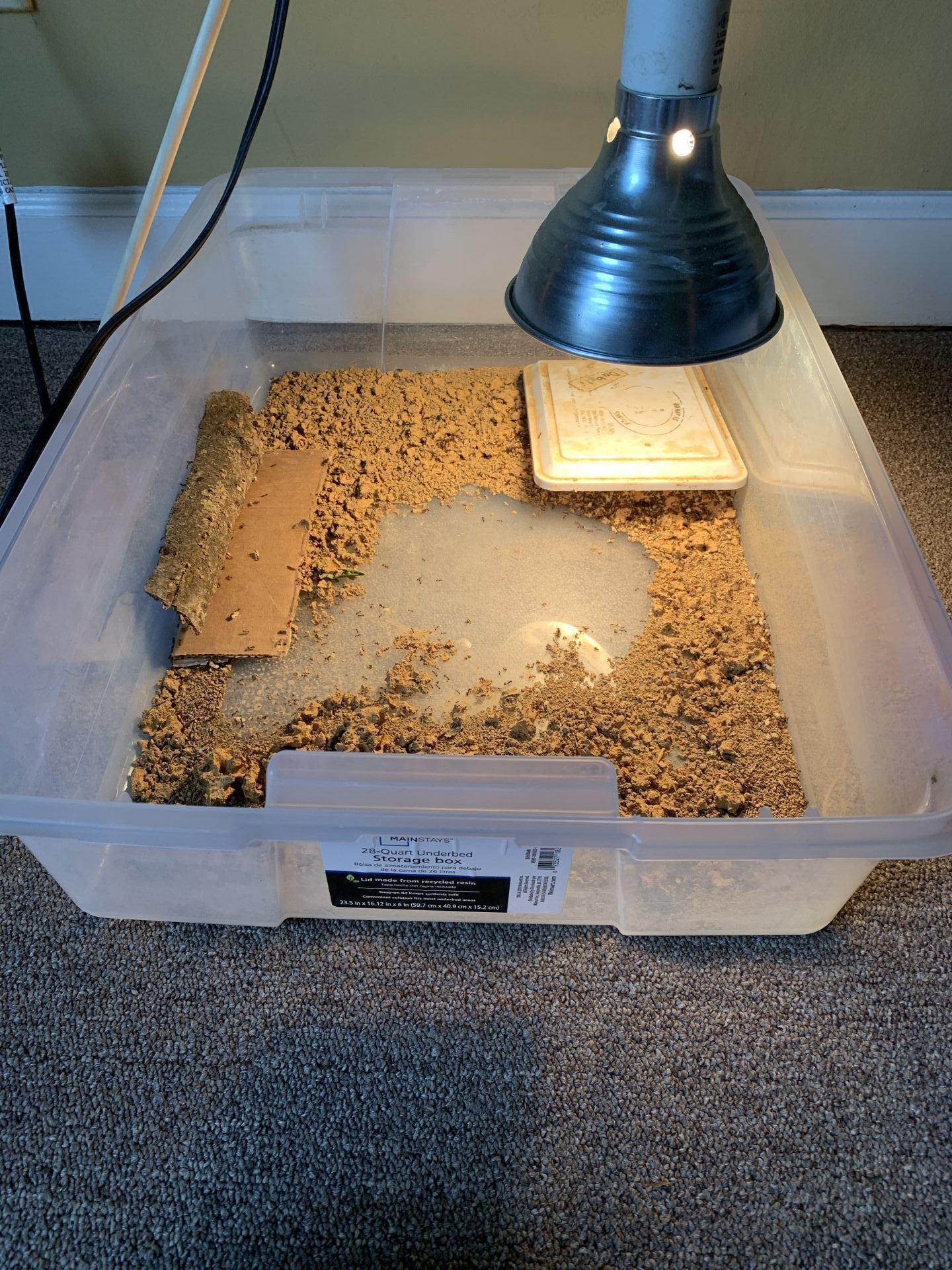
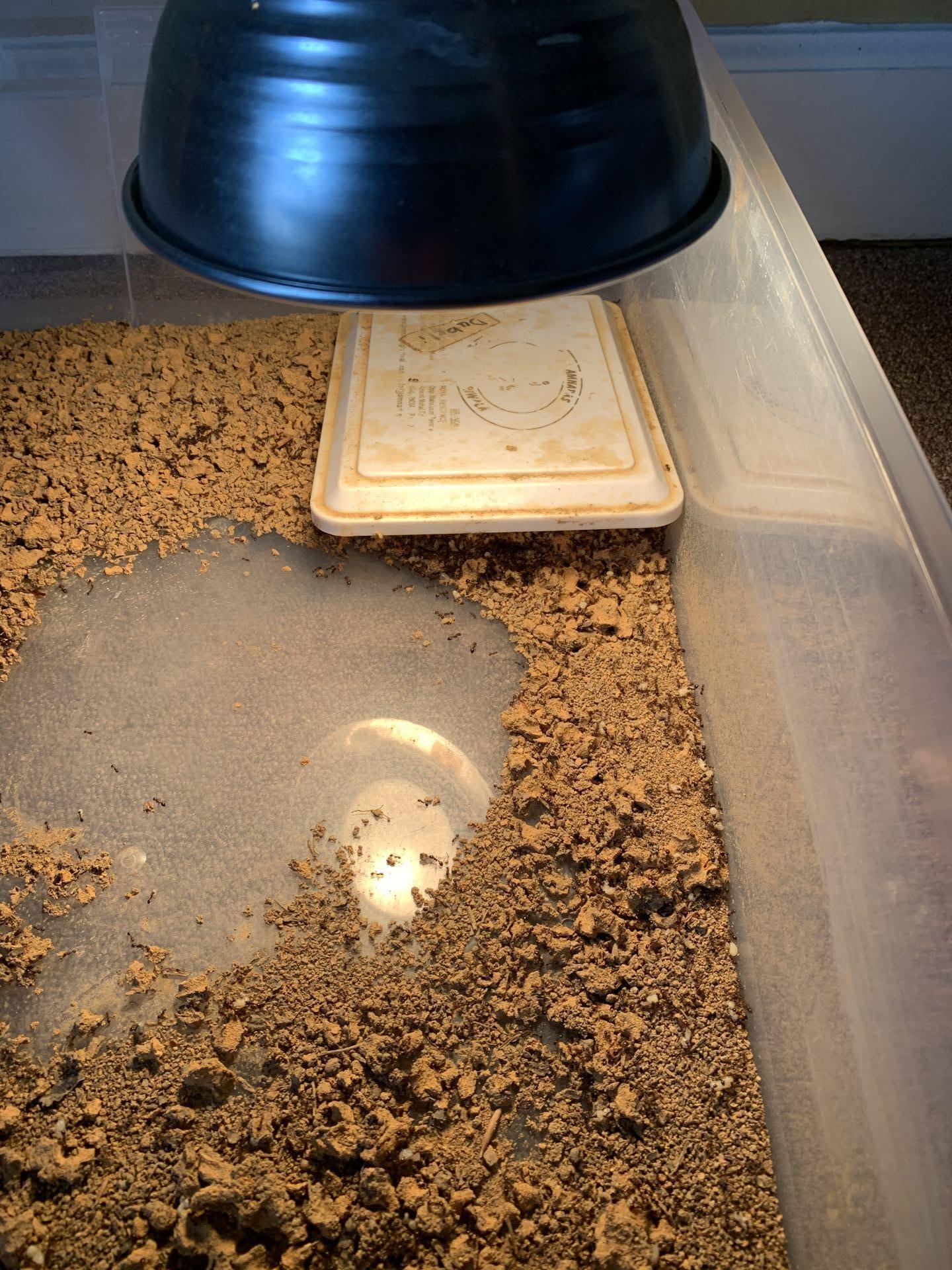
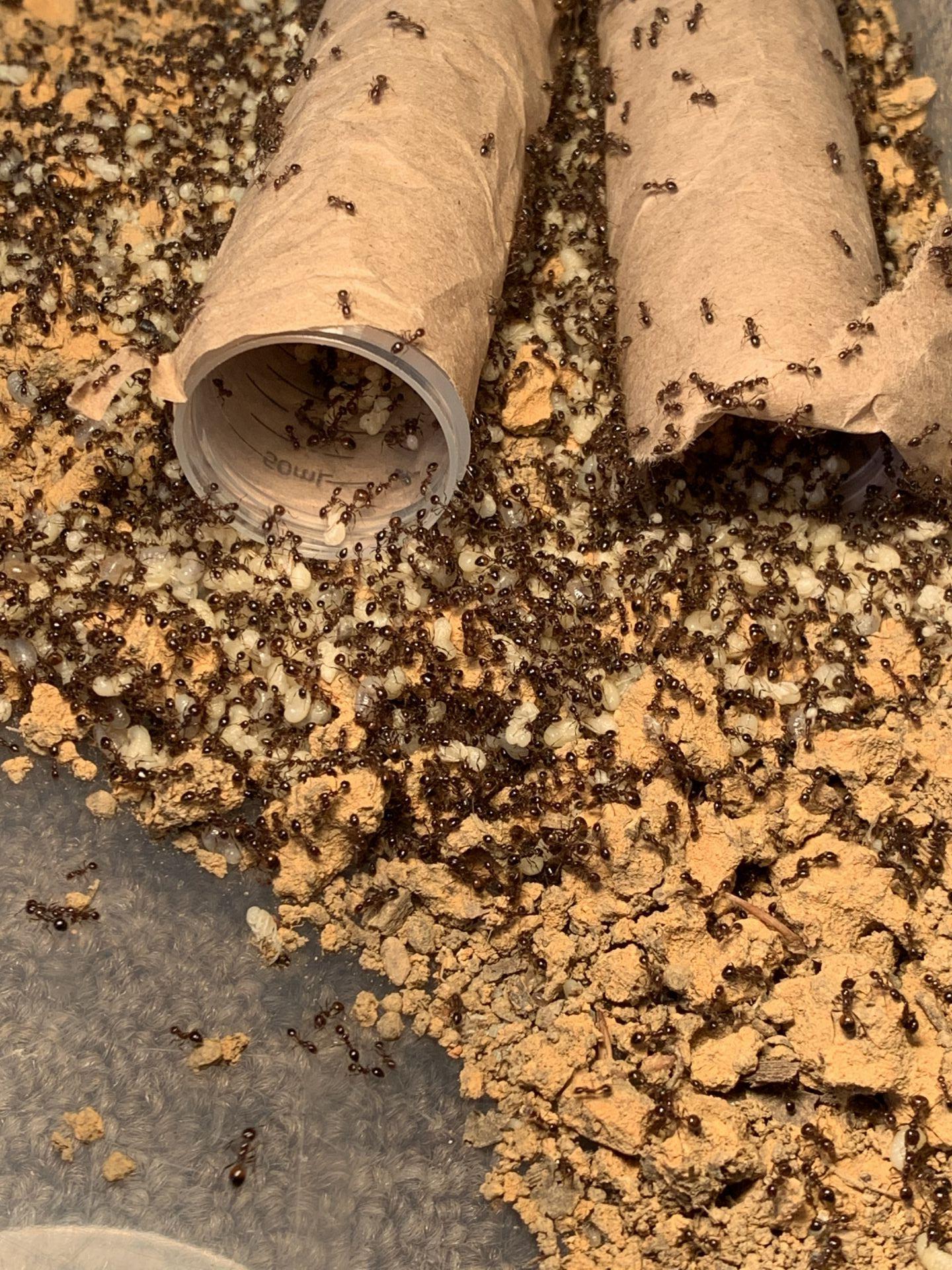
Edited by PurdueEntomology, May 18 2020 - 12:46 PM.
Phase 3: Separating brood from S. invicta and weighing out resultant brood-food:
Image of scale and weighed empty cup
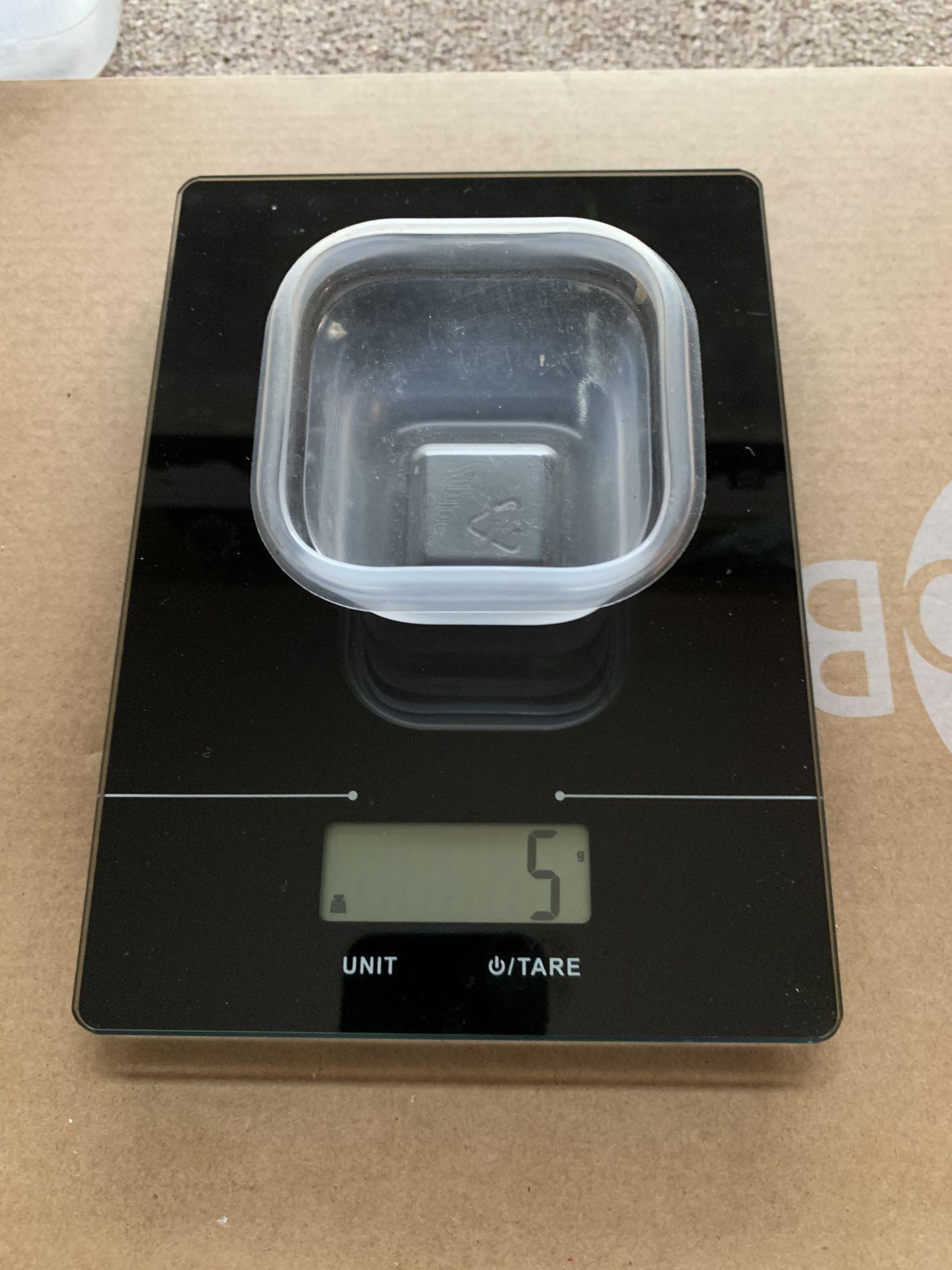
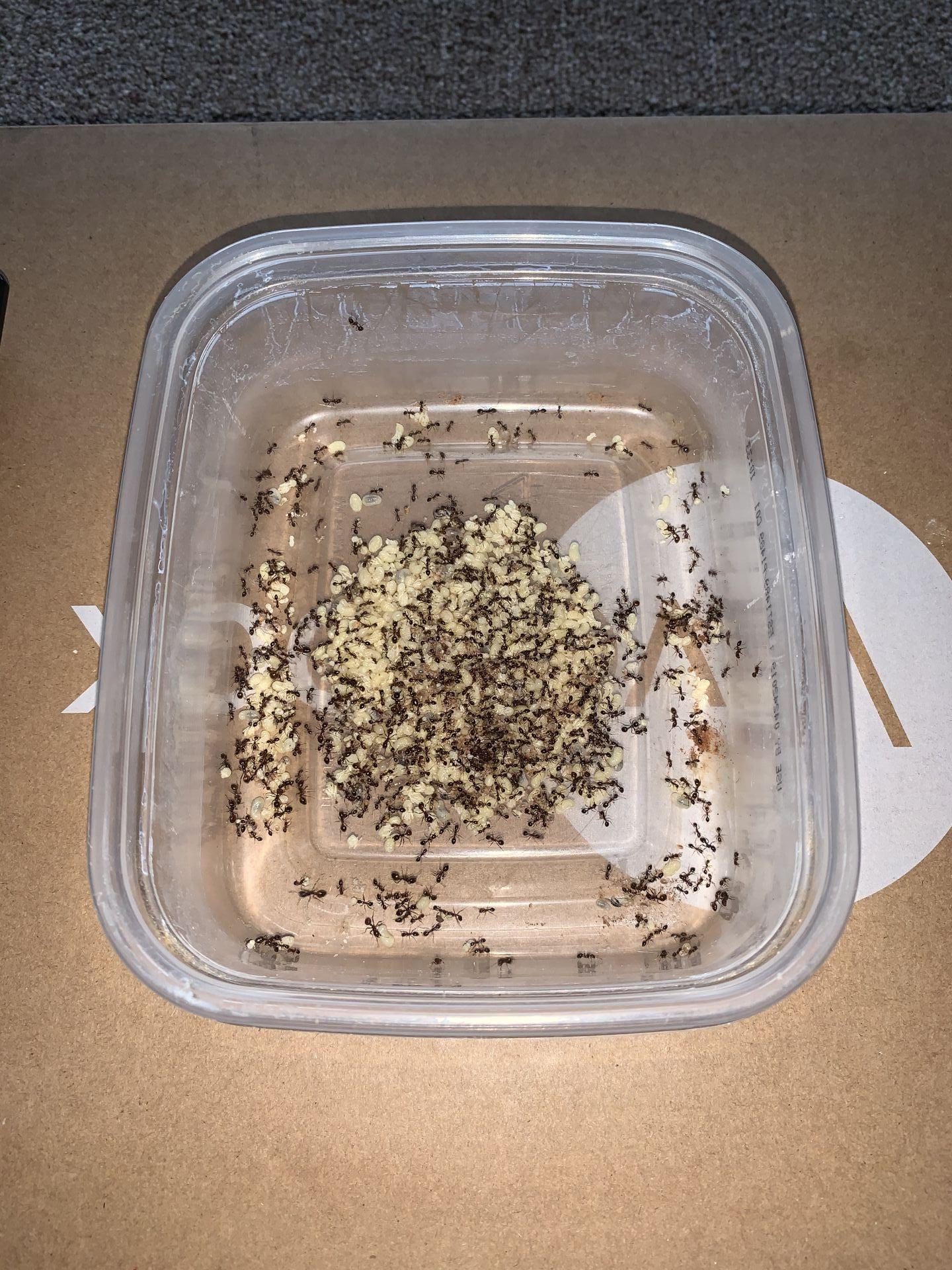
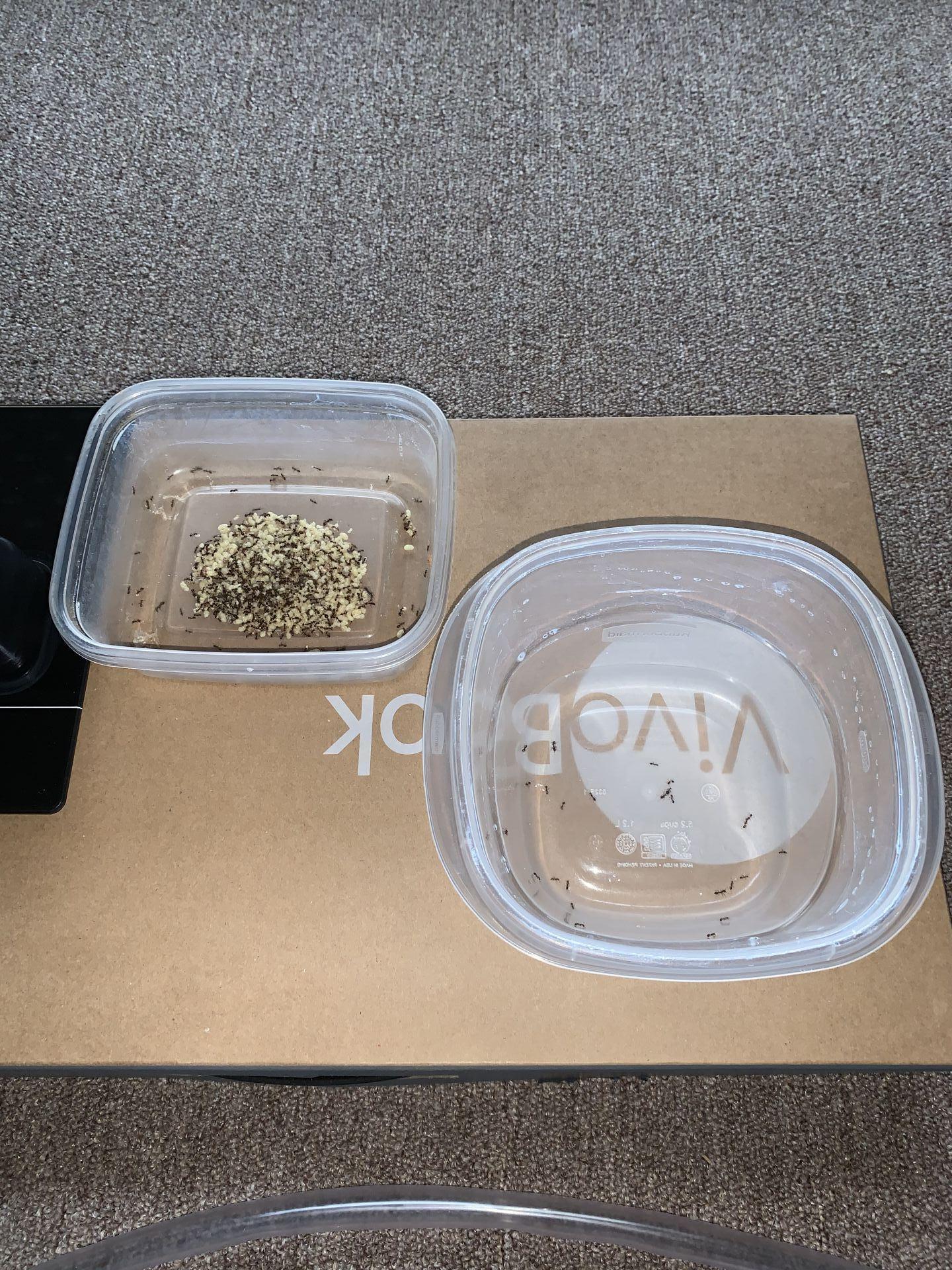
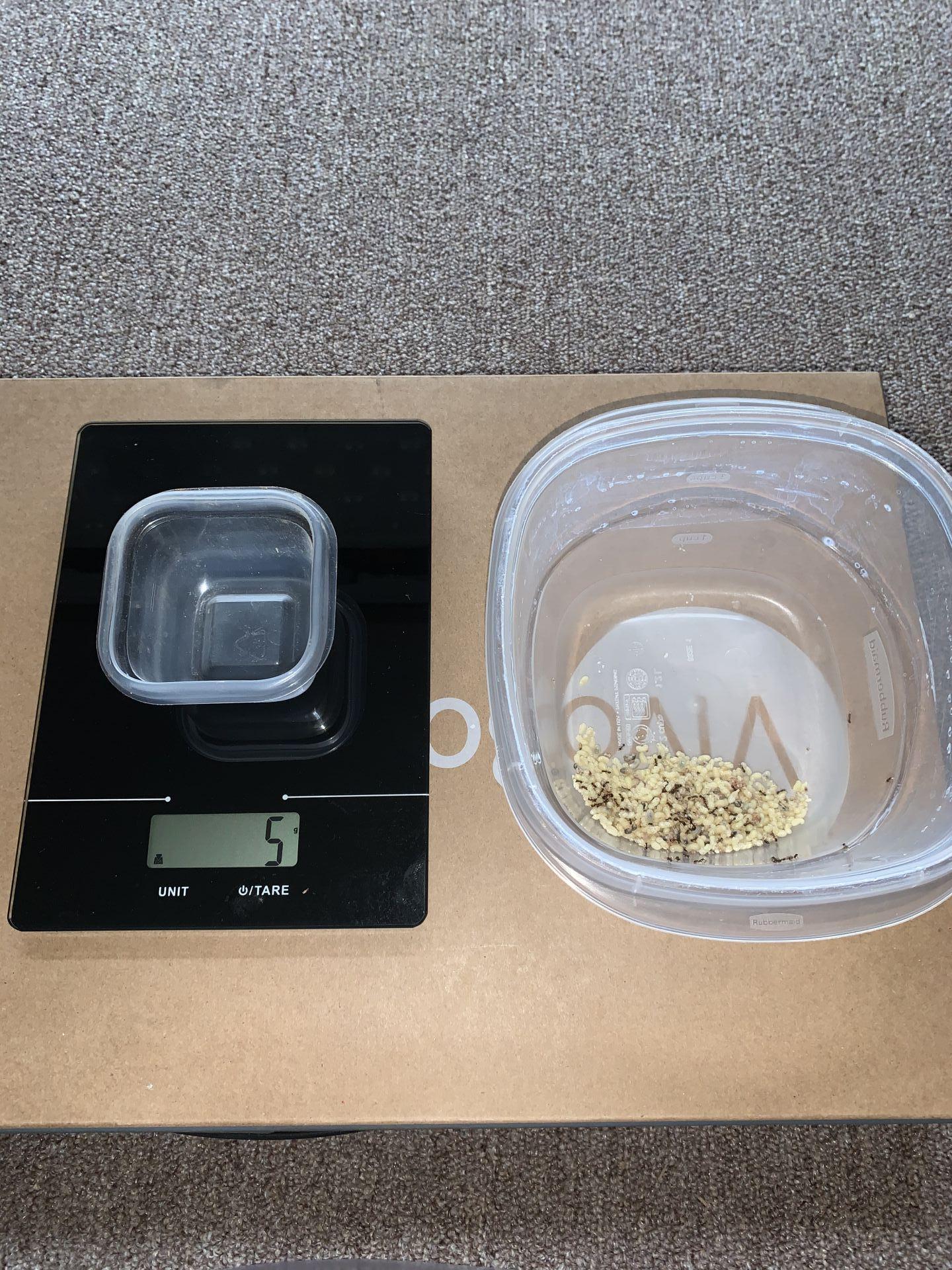
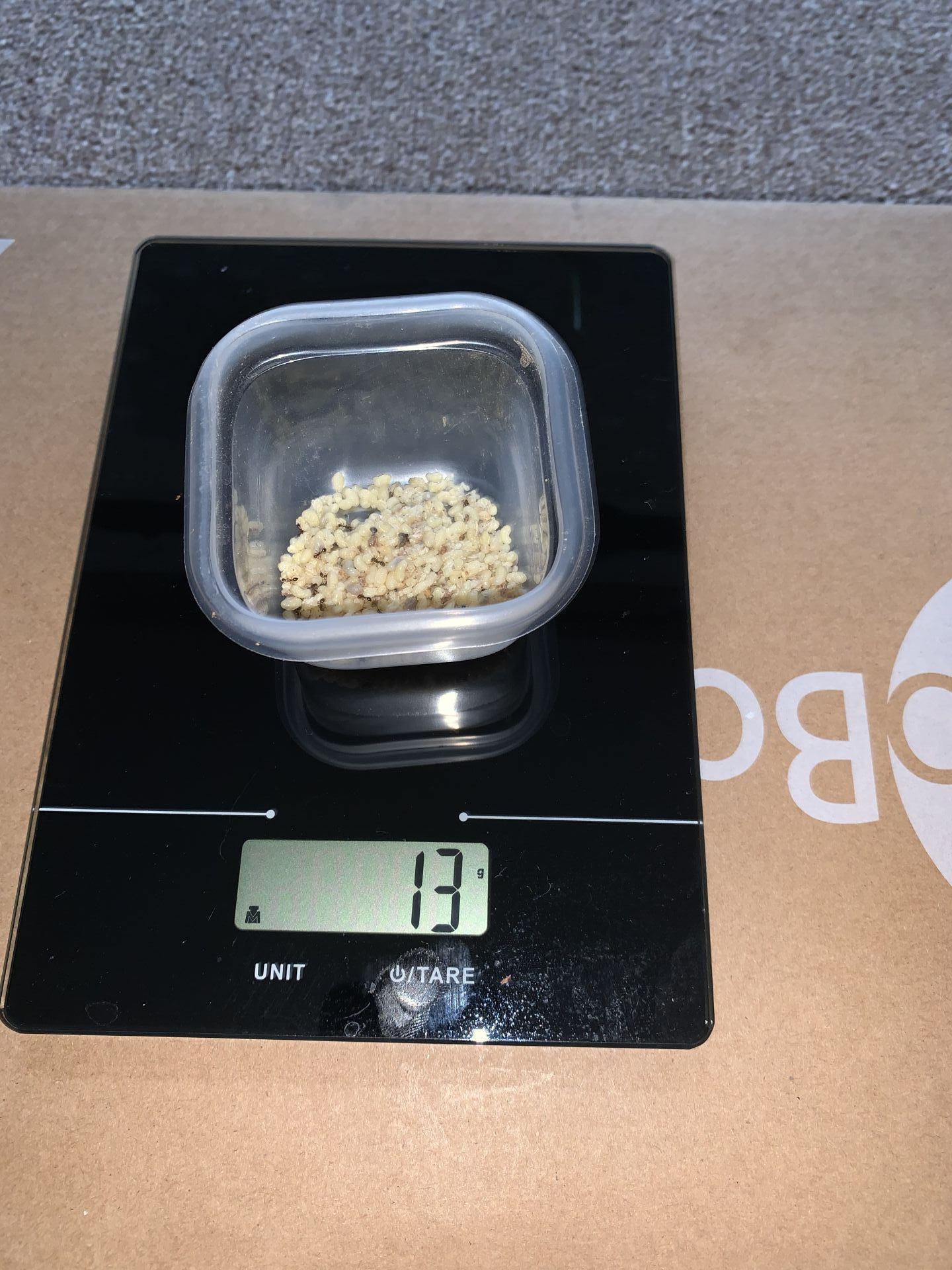
Edited by PurdueEntomology, May 18 2020 - 2:26 PM.
Pretty neat journal!
They seem to be doing well!
I agree. By the way, welcome back! It's good to see you again!
"God made..... all the creatures that move along the ground according to their kinds (including ants). And God saw that it was good. Genesis 1:25 NIV version
Keeping:
Tetramorium immigrans Camponotus vicinus, modoc, novaeboracensis, herculeanus
Formica pallidefulva, argentea Solenopsis molesta
Formica cf. aserva Lasius brevicornis, neoniger
Pretty neat journal!
They seem to be doing well!
I agree. By the way, welcome back! It's good to see you again!
Thanks for the well wishing and yeah, always a pleasure to share and learn from you all.
Update: Things are going well, the larvae have definitely grown and there is clearly variation in sizes, which is to be expected since there is polymorphism in this species. No issues at all to be honest, and I have not seen one dead ant so if they are dying it is hidden or they are not putting corpses in a pile. I am not sure of exact numbers but definitely there a at least 5000 larvae if not more. If things keep going well the colony will definitely have a large % increase in overall worker numbers. I have not seen the queen but I am not looking for her either. I will get some more photos updated and there was a surprise too which I got on video I just need to get that to Youtube then linked in. You all will love it....hehe
Update: Things are going well, the larvae have definitely grown and there is clearly variation in sizes, which is to be expected since there is polymorphism in this species. No issues at all to be honest, and I have not seen one dead ant so if they are dying it is hidden or they are not putting corpses in a pile. I am not sure of exact numbers but definitely there a at least 5000 larvae if not more. If things keep going well the colony will definitely have a large % increase in overall worker numbers. I have not seen the queen but I am not looking for her either. I will get some more photos updated and there was a surprise too which I got on video I just need to get that to Youtube then linked in. You all will love it....hehe
My Main Journal | My Neivamyrmex Journal | My Ant Adoption | My YouTube
Join the TennesseeAnts Discord Server! https://discord.gg/JbKwPgs
In Container A where the colony seems to have decided that is where they want to be there are some mites, but not on the ants I believe these mites are feeding on refuse in the peat, but to be safe I have ordered some predatory mites and will have them next Wednesday and will put them in. My hopes were the colony would decide to move to a different container but I honestly believe the feeding regiment I am giving them leaves no incentive to move. Why move when every day at 7pm manna from heaven falls abundantly?! Had and if they would just move would allow me to take container A and sterilize the media by baking it to kill any mites etc then reinstalling it. I did select workers that seemed to be 'acting oddly' like licking their Gaster posteriors rather vigorously as I was thinking perhaps they had an ecto parasite sic. mite, but on the 3 workers I removed and inspect there were no ecto parasites that I could detect. I am closely monitoring this issue but so far it is not an issue. In container D I bought some reptile refuges i.e., those plastic halves that look like tree bark and created arched spacing surrounded by peat so that they could have that as an ideal new bivouac space and I have placed a second heat lamp over it with the hopes that if it is kept warm that will attract them to move brood into it as they definitely keep the brood in warm areas directly associated with first heat lamp over Container A.
Edited by PurdueEntomology, May 21 2020 - 5:22 PM.
My Main Journal | My Neivamyrmex Journal | My Ant Adoption | My YouTube
Join the TennesseeAnts Discord Server! https://discord.gg/JbKwPgs
So I am planning My second attempt at Neivamyrmex Sp. I am curious about some of the finer details of what You are doing? Like Your feeding regiment is very specific which is Great. Anything special about other factors of the setup. Humidity? How You maintain said Humidity? I am planning on Building a very large Enloser (hopefully later this Year) But I am curious if You have any tips. The fact that Brood development is happening is amazing I applaud that. I hope through trial and error by the few of us that attempt These Ants eventually grants a tried and true method for maintaing captive Colonies
Squidkid: Thank you for the interest. Neivamyrmex obviously is not a genus to just jump into. I want every one to understand that. Now there is the possibility of maintaining them I believe in a more sterile laboratory manner but I have chosen a more "large out world" approach. My reasoning is rather simple, offer them something they are familiar with. Now I know I have a higher possibility of disease or infection but that is a payoff. I am preparing a long culture and care paper based on previous researchers housing N. nigresecens and of course my own failed attempt two years ago and my current (cross my fingers) more successful housing this time round. I will probably have that finished in couple of months. Definitely the issue to keep in mind is keeping a colony well stocked with food. I am also keeping notes and will have real physical data to process and add to care paper. Let me see how far this colony moves forward. if I can get them through this summer successfully alive and healthy, then I will be able to speak with greater certitude and authority.
A photo of largest of at least two separate brood piles. Honestly I could not get the whole thing in one shot without disturbing them too much that is why it is not in focus. I got in took a photo and ran. From my eye ball estimate I would say there are 8-10K larvae if not more. Oh and I did see the queen scurry away!! Good to know she is alive.

Edited by PurdueEntomology, May 22 2020 - 5:01 AM.
Wow! that's a ton of brood! ![]()
Ants I have: Tapinoma sessile(2 queen colony). RED MORPH Camponotus neacticus(now has pupae!), Tetramorium immigrans (x3), Aphaenogaster sp, Temnothorax sp, Brachymyrmex sp. possibly infertile ![]() , Ponera pennsylvanica, and Pheidole morrisi!
, Ponera pennsylvanica, and Pheidole morrisi! ![]()
Other insects: Polistes sp. Queen
Ants I need: Pheidole sp., Trachymyrmex sp., Crematogaster cerasi , Dorymyrmex sp. Most wanted: Pheidole morrisii
Another observation...Where are the Solenopsis food-brood!? I am giving them an average of 9.5 grams daily which as can be seen from the photo where I weighed out 8 grams of S. invicta brood is quite a bit. On this peek-a-view I made I saw a few food-brood but not to the amounts I have been giving daily, so all I can assume is that food-brood is with the majority of the worker mass being consumed and then regurgitated to the larvae. I say this because clearly only a portion of the workers were in this brood area and I have not once observed a sufficient quantity of food-brood with the Neiv.opac larvae to warrant that the larvae are put on their food source to feed. So many unknowns...
Edited by PurdueEntomology, May 22 2020 - 8:27 AM.
0 members, 1 guests, 0 anonymous users